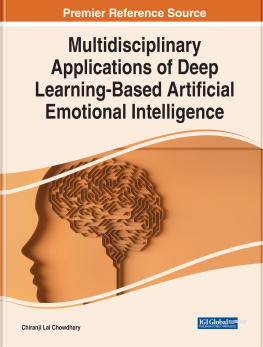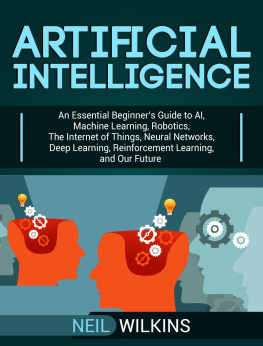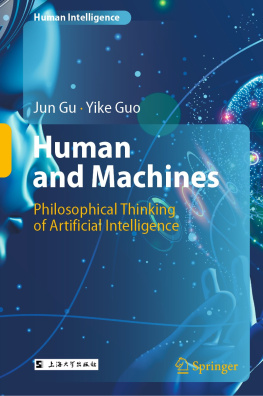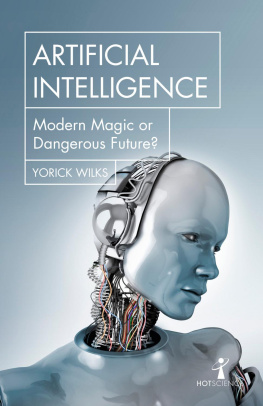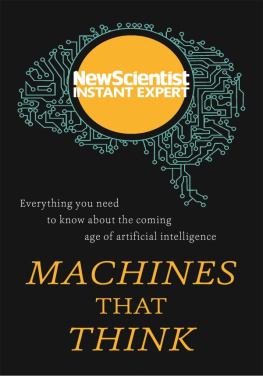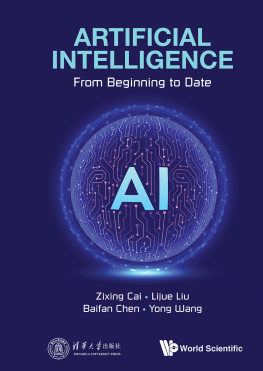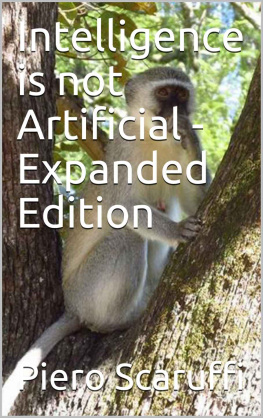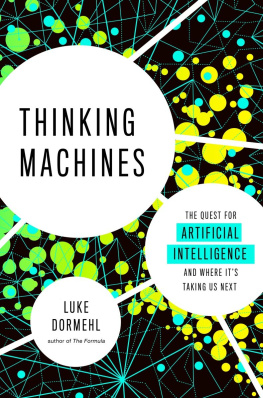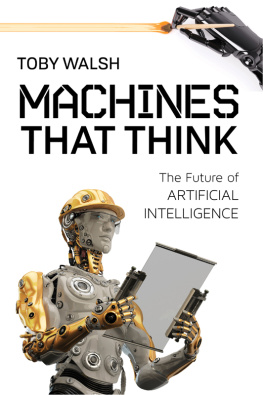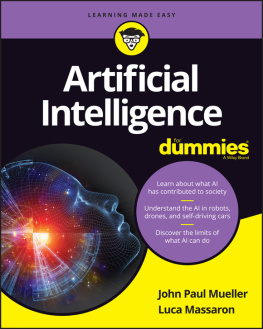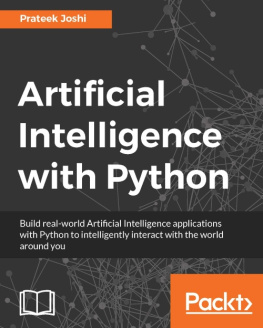THE MEANING OF ARTIFICIAL INTELLIGENCE
Artificialintelligence can be defined as follows:
Theresearch study of mental faculties through the use of computationaldesigns.
Theamazing new effort to make computer systems think ... devices withamind, in the complete and real sense.
Theart of developing machines that carry out functions that requireintelligence when carried out by humans. A study that looks for toclarify and emulate intelligent behavior in terms of computationalprocedures.
Thestudy of how to make computers do things at which, at the moment,people are much better.
Thestudy of the computations that make it possible to perceive, think,and act.
Thebranch of computer science that is concerned with the automation ofsmart habits.
Accordingto these meanings, computer systems can be classified into thefollowing classifications.
Systemsthat imitate human beings
Systemsthat rationalize like people
Systemsthat ponder things rationally
Systemthat act logically
1.Systems that imitate human beings
TheTuring test, done by Alan Turing (1950), was developed to provideanacceptable functional meaning of intelligence; Turing specifiedsmartbehavior as the capability to accomplish human level efficiency inall cognitive tasks enough to fool an interrogator. Approximately,the test he proposed is that a computer needs to be questioned by ahuman by means of teletype; it will pass the test if theinterrogatorcannot tell if there is a computer system or a human at the otherend.
2.Systems that think like people
Numerousessential programming projects were started during the late 1950s.Among them was the General Problem Solver (GPS). Newll and Simon,whocreated the GPS in 1961, were not happy to have their programproperly solve issues. They were more worried about comparing thetrace of its reasoning actions to that human subjects fixing thesameproblem (Yazdani & Narayanana 1985). This is in contrast to theideas of other scientists of the exact same time (Wang 1960), whowere worried about getting the right responses, no matter howhumansmay do it. The interdisciplinary field of cognitive sciencecombinescomputer system designs on AI and experimental techniques frompsychology to try to construct precise and testable theories of theworkings of the human mind.
Turing'scriterion to require such a blurring of difference was presented inthe form of a test named the 'imitation game ', which is a new waytoresolve the problem- Can a device think? Dr Alan Turing comparesthecomputer system to a human to decide whether a machine can think.Thegame is played with 3 people: a man (A), a woman (B), and aninterrogator (X) of either sex. A and B stay in room apart from X,who does not understand which of A and B is the man and which isthefemale. His/her goal is to figure out the sex of A and B correctlybyasking questions. X can not see or hear A or B but passes messagesthrough an intermediary, which could be an electronic mail systemoranother person.
Asthey respond to questions, A and B total with each other to confusethe interrogator. X finally give his decision based on theirreactions. Now the game is played by changing either A or B with adevice and the original question is changed by the following ones:"What will occur when a machine takes the part of A in this game?"or, "Will the interrogator decide mistakenly as often when thegame is played like that as he does when the game is played betweenamale and a woman?"
Ifthe response to the 2nd question is positive, the device passes theTuring test and, based upon this particular criterion, can think(Tanimoto 1987). However, in practice, the result of such a testwould probably depend heavily on the human beings included, alongwith the actual device.
In1973, Colby, Hilf, Weber, and Kramer published the results of theirTuring-like indistinguishability test with their PARRY program.Thisprogram is a computer system simulation that displays habitscomparable to that of human phobia patients. The physician whojudgedthe computer system versus the clients, failed to distinguish thecomputer properly, and it is said that the test hadsucceeded.
3.Systems that think rationally.
TheGreek thinker Aristotle was among the very first to attempt tocodifycorrect thinking. His well-known syllogisms provided for argumentstructures that usually offer proper conclusions had exampleslike,"Xis a male, all men are mortal; for that reason X is mortal."These laws of logic were supposed to govern the operation of themind, and initiated the field of reasoning.
4.Systems that act rationally.
Inthe laws of rationalist views to AI, the entire focus was oncorrectreasoning. Making proper inferences is sometimes part of being arational agent, because one method to act logically is to reasonlogically to the conclusion that some action will accomplish one'sgoal, and then to act upon the conclusion. On the other hand, rightinference is not all rationality, because there are usuallycircumstances where there is no right thing to do, yet somethingneeds to still be done, For instance, pulling one' s hand off of ahot stove is a reflex action that is more successful than a sloweraction taken after careful deliberation.
WHAT IS THE PURPOSE OF AI?
WhenAI researchers initially began to aim for the objective ofartificialintelligence, a primary interest was human reasoning ... Theparticular functions that are programmed to a computer might beableto account for a lot of the requirements that allow it to matchhumanintelligence.
WHAT ARE THE VARIOUS KINDS OF AI?
Wehave to overcome the boundaries that specify the 4 various kinds ofartificial intelligence, the barriers that separate devices from us-and us from them.
TypeI AI: Reactive machines
TypeII AI: Limited memory
TypeIII AI: Theory of mind
TypeIV AI: Self-awareness
AI A SHORT HISTORICAL PERSPECTIVE
Theprinciple of artificial intelligence has been around since the1970s.Originally, the primary goal was for computers to make decisionswithout any input from people. But it never caught on, partlybecausesystem administrators couldn't figure out how to use all theinformation. Even if some could comprehend the value in theinformation, it was really tough to utilize, even forengineers.


